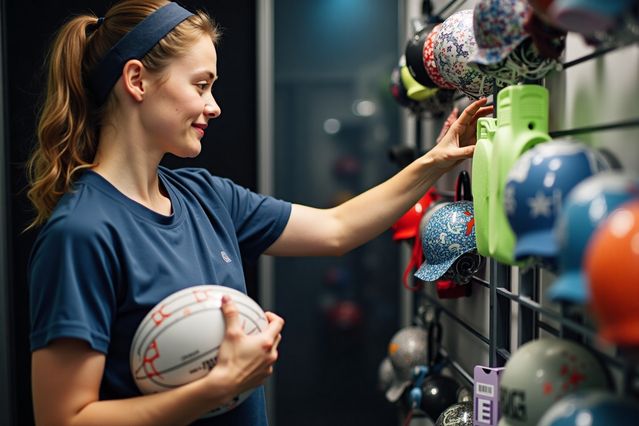Understanding Your Sport's Equipment Requirements
Before diving into the world of sports equipment, it's crucial to understand the specific requirements of your sport. Each sport has unique equipment needs, and familiarizing yourself with them will help you make informed decisions. Consider factors such as the type of equipment required, the quality standards, and any specific brand recommendations.
Research and Consultation
Start by researching the equipment commonly used in your sport. Look for reputable sources such as sport-specific websites, forums, and expert opinions. Additionally, consult with experienced athletes or coaches who can provide valuable insights based on their personal experiences. Gathering a pool of information will give you a solid foundation for making the right choices.
Consider Your Skill Level and Goals
When selecting sports equipment, it's essential to consider your skill level and goals. If you're a beginner, investing in top-of-the-line equipment may not be necessary. Start with entry-level options that allow you to learn the basics without breaking the bank. As you progress and develop your skills, you can upgrade to more advanced equipment suited to your improved performance and specific goals.
Budget Constraints
Setting a budget is crucial while purchasing sports equipment. Determine how much you're willing to spend and explore options within that range. Remember that quality equipment doesn't always have to come with an exorbitant price tag. Look for reputable brands that offer a balance between affordability and durability. Keep in mind that investing in high-quality equipment can enhance your performance and provide better long-term value.
Try Before You Buy
Whenever possible, try out the equipment before making a purchase. This applies to items such as sports shoes, gloves, or racquets. Visit a local sports store and ask if you can test the equipment or try on different sizes. This hands-on experience will help you determine if the equipment fits comfortably and meets your specific needs. Additionally, it allows you to assess the quality and performance firsthand.
Online Shopping Considerations
If you prefer shopping online, make sure to read customer reviews and check the sizing charts provided by the retailer. Look for detailed product descriptions that highlight key features and specifications. If possible, opt for websites that offer flexible return and exchange policies, allowing you to return or exchange the equipment if it doesn't meet your expectations.
Maintaining and Replacing Your Equipment
To ensure the longevity of your sports equipment, proper maintenance is essential. Follow the manufacturer's instructions for cleaning, storage, and general upkeep. Regularly inspect your equipment for any signs of wear and tear, and replace damaged or worn-out items promptly. By taking care of your equipment, you'll maximize its lifespan and optimize your performance on the field.
Upgrading as You Progress
As you advance in your sport and reach higher skill levels, consider upgrading your equipment. Upgraded gear can provide additional features and improvements that align with your evolving needs. Stay updated with the latest advancements in sports equipment technology to make informed decisions about when to upgrade and invest in new gear.








